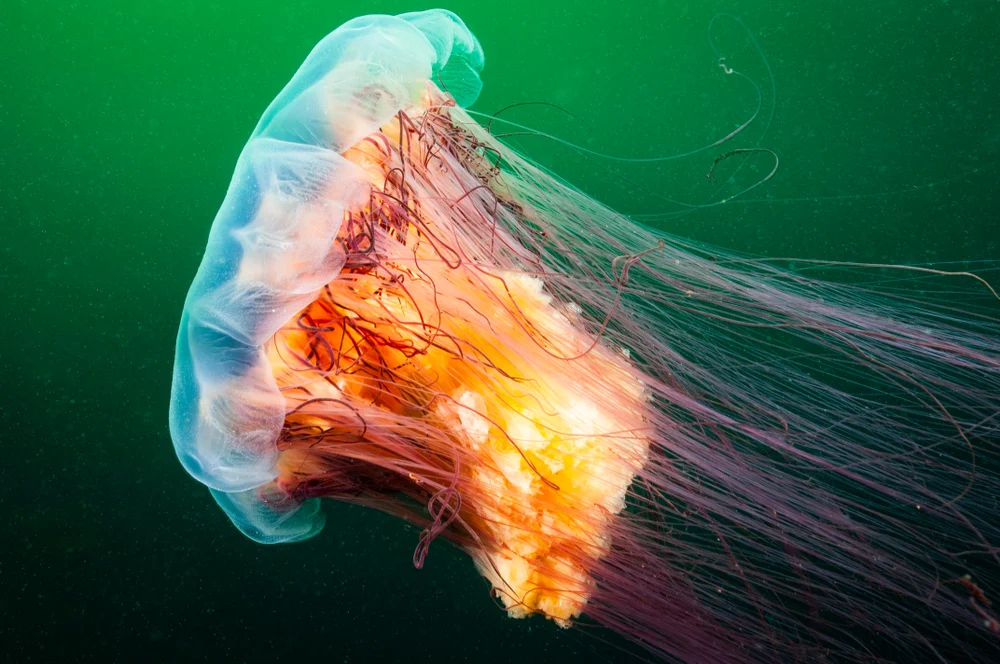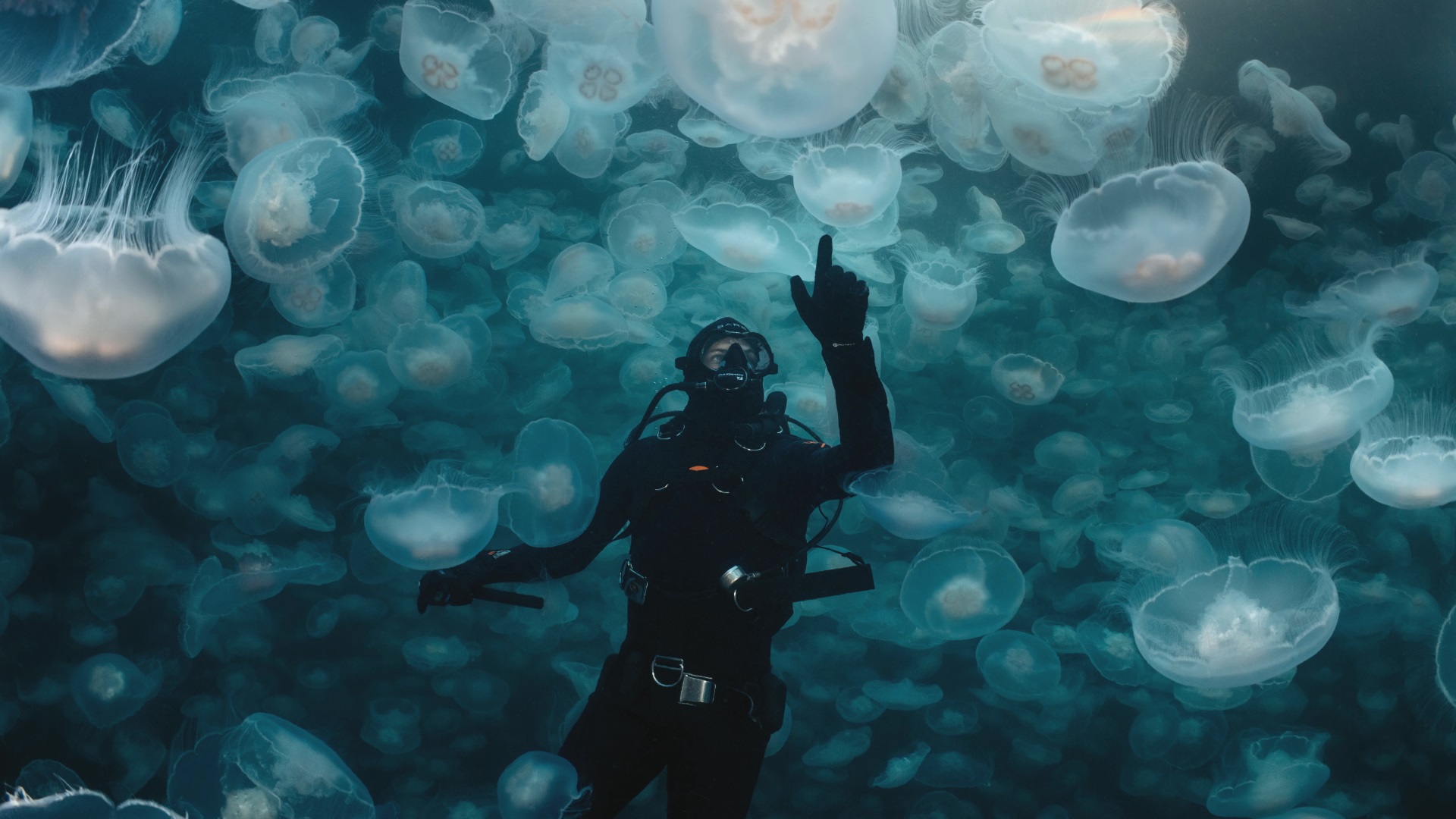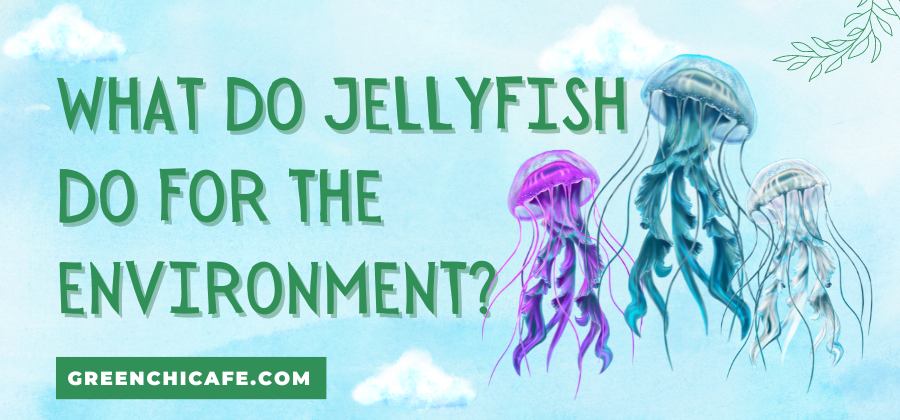Jellyfish are far more than a nuisance to beachgoers.
As predators, prey, and prolific reproducers, they influence biodiversity, provide key services, and offer clues about our warming, polluted seas.
Read on to learn more about the surprisingly vital environmental role of jellyfish.
What Do Jellyfish Do For The Environment?

Jellyfish play important roles as predators, prey, and nutrient cyclers that influence marine food webs and biodiversity.
They control zooplankton populations, provide food for turtles and fish, and transport carbon.
Jellyfish blooms can be indicators of climate change and other ecosystem alterations.
Key Points
- Jellyfish occupy multiple trophic levels, feeding on zooplankton and serving as prey for larger animals.
- Jellyfish blooms provide pulses of food but can also damage fisheries and overwhelm ecosystems.
- Jellyfalls transport nutrients to the deep sea floor, benefiting scavengers.
- Jellyfish help cycle carbon through respiration, feeding, decomposition, and sequestration in the deep ocean.
How Do Jellyfish Fit Into Ocean Food Webs?
Jellyfish occupy multiple levels of the food chain.
As predators, they feast on fish eggs and juvenile fish, shrimp, mollusks, and tiny plants called phytoplankton. A
s prey, jellyfish are eaten by sea turtles, large fish, and some seabirds.
Their availability impacts the growth and reproduction of creatures that consume them.
How Do Jellyfish Blooms Affect Fish?
When jellyfish rapidly reproduce, forming blooms, they compete with fish for planktonic food sources and prey on fish eggs and larvae.
This can decrease fish recruitment success.
Jellyfish also clog and damage commercial fishing gear.
But some fish hide in jelly swarms for protection.
Overall impacts depend on bloom size and timing.
Are Jellyfish Blooms Always Bad?

Not necessarily.
Small, periodic blooms are a natural phenomenon that provides pulses of food for some predators.
But climate change and human activities like overfishing, pollution, and artificial structures are causing more frequent and extensive blooms with detrimental effects.
Finding balance is key.
How Do Jellyfish Control Zooplankton Populations?
Jellyfish are voracious predators of tiny zooplankton-like copepods that graze on phytoplankton.
When jelly numbers are high, their grazing suppresses zooplankton populations.
This frees phytoplankton from predation pressure, increasing photosynthesis and oxygen production.
So jellyfish presence can raise oxygen levels.
How Do Jellyfalls Benefit Seafloor Ecosystems?
When jellyfish die, their carcasses sink rapidly to become “jellyfalls”.
This massive input of organic matter and nutrients energizes seafloor scavengers and bacteria.
Jelly-eating creatures rush in to consume the sudden bounty.
Jellyfalls can also generate unique mini-habitats for specialized bottom-dwellers.
How Are Jellyfish Adapting to Ocean Acidification?
Some research indicates jellyfish may fare better than other marine life as oceans acidify.
Their simple body plan may be more resilient to corrosive water chemistry changes.
And they can thrive in deoxygenated waters inhospitable to more complex animals.
But much is still unknown about jelly adaptation capacities as environments transform.
How Do Jellyfish Contribute to the Carbon Cycle?
Like other marine organisms, jellyfish influence carbon cycling.
When they bloom, jellyfish absorb carbon through feeding and metabolism.
Sinking jellyfalls transport carbon to the deep sea. And jellies release carbon through respiration and decomposition.
Their roles in different ocean zones make jellyfish an important component of carbon fluxes and sequestration.
Can Jellyfish Help Reduce Ocean Plastic?
Interest is growing around the idea of using jellyfish to help remove plastic waste from the seas.
Jellyfish filter and ingest tiny microplastics and nanoplastics as they feed.
Scientists are studying whether jelly biomass could be harvested to remove accumulated plastics before they sink upon death.
The concept has promise but needs more research.
Are Jellyfish Blooms Linked to Climate Change?
Increased jellyfish blooms are correlated with warming seas, although the reasons are complex.
Some evidence suggests warming gives jellies a developmental advantage.
And they can withstand low oxygen conditions created by eutrophication and ocean stratification driven by climate change.
Jellyfish are bellwethers for assessing marine ecosystem modifications.
How Do Jellies Help Other Species?
Small fish and crustaceans hide from predators amidst jellyfish swarms.
And juvenile fish shelter beneath jelly umbrellas. Some creatures hitch rides on swimming jellies to conserve energy.
Seabirds and turtles follow blooms to locate food.
And jellyfalls deliver nutritious bounties to seafloor scavengers.
Even after death, jellies nourish life.
Why Is Jellyfish Important?
Jellyfish are ecologically important for several reasons.
They control zooplankton populations, provide food for turtles, fish, and seabirds, and transport carbon and nutrients through ocean zones.
Jellyfish also indicate overall marine ecosystem health and changes.
Their unique biology provides survival advantages in changing environments. Some species have existed for over 500 million years.
Jellyfish blooms, while sometimes problematic, create feeding bonanzas for migrating sea turtles and draw in larger predators like tuna and sunfish.
Jellyfalls fertilize and energize deep-sea ecosystems and scavengers.
The complex life cycle of jellies contributes to biodiversity.
And their pulsing blooms and declines allow ecosystems to reset.
Jellyfish remain integral to productive, stable marine food webs worldwide.
How Do Jellyfish Affect The Ecosystem?
Jellyfish affect marine ecosystems as predators, prey, nutrient transporters, habitat providers, and indicators of change.
They exert top-down trophic control on zooplankton, which cascades down the food chain.
Jellyfalls subsidize deep seabed life. Jelly swarms shelter small species.
Mass blooms disrupt fisheries but create feeding opportunities for migrating sea turtles.
Jellyfish distribution, reproduction, and blooms provide information on water quality, climate shifts, acidification, and human impacts.
Some species tolerate heavily degraded environments.
Jellies assimilate toxins and microplastics, influencing how these enter food webs.
Overall, jellies represent an influential gelatinous component shaping ecosystems.
Key Takeaway:
- Jellyfish hold a vital niche in ocean ecology and food webs.
- These complex creatures influence climate cycles, drive energy flows, accumulate toxins, and indicate environmental alterations. While blooms can be destructive, jellies remain integral components of healthy, productive seas. Their unique biology and adaptations are worth protecting.
Frequently Asked Questions
How Long Have Jellyfish Been Around?
Jellyfish are ancient organisms that have lived in the seas for over 500 million years, preceding land plants and dinosaurs. Fossil records show jellies have remained morphologically similar through deep time.
How Many Jellyfish Species Exist?
Currently, scientists recognize approximately 2,000 different jellyfish species globally. New species continue to be discovered as research expands into new ocean territories and depths.
Do Jellyfish Have Brains?
No, jellyfish do not have centralized brains or complex nervous systems. But they do have simple nerve nets that detect stimuli and coordinate movement and responses. Some jellies exhibit advanced behaviors.
Are Jellyfish Immortal?
No, jellyfish are not truly immortal, but some have extraordinary lifespans and reproductive strategies that allow near-continuous propagation in ideal conditions. Certain jelly species can live over a decade.
GreenChiCafe is passionate about our natural world and protecting the biodiversity of our oceans.
Check out our website for more content about marine biology, ecology, and ocean conservation.
